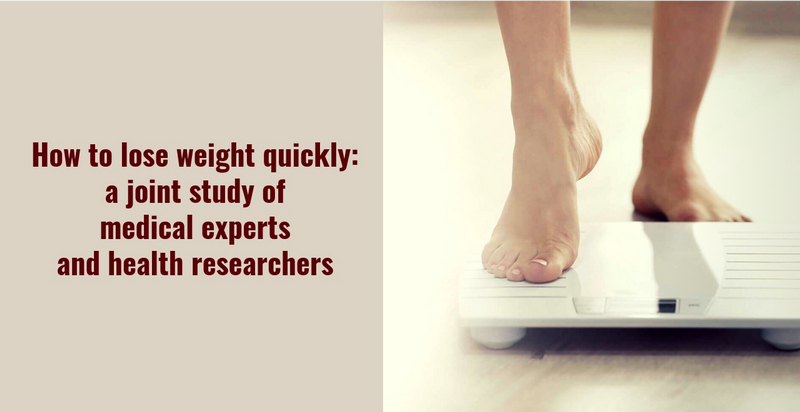
When summer comes, many people suddenly realize that they have grown fat over the winter and that they need to lose weight urgently. The Internet is overwhelmed with various recipes about how to lose weight quickly. Many of these methods are very exotic, but all promise quick results.
Martin Cornell, an inspector of the Agency for Healthcare Research and Quality, decided to try out some of these methods and determine which one is the most effective.
The fatty tissues of the body are divided into two types. The first of them is the subcutaneous fat, the one that forms an unpleasant thickening at the waist. In addition, our internal organs — for example, the liver, intestine, or pancreas — are surrounded by internal fat.
Last year, Martin underwent a magnetic resonance scan of internal organs for the first time, and this was a sobering moment in his life. An excess of this internal fat can lead to undesirable health effects.
Internal fat is considered more active in terms of metabolism and has a faster digestion cycle.
If you gain weight, this happens primarily due to the accumulation of internal fat, and when you lose weight – due to its loss. Although this fat is considered more dangerous to health, it is much easier to remove from the body than subcutaneous fat. The question is how to do it.
Numerous sites dedicated to weight loss promise that a person can achieve a decrease in waist size in a short time. But are these promises real?
The course of the experiment
Martin invited 35 volunteers and two experts in the field of nutrition and physical education.
All volunteers had problems with weight – they all had a stomach that was so large that they were at risk of diabetes and cardiovascular diseases.
Patrick Swan, a researcher of the National Center for Complementary and Integrative Health (NCCIH), and Sara Thompson, an expert from Canadian Health and Care Mall, offered two methods of weight loss, which were tested on four groups of volunteers.
Before the experiment, each participant underwent a medical examination. One of its most important elements was biphoton absorption, DEXA, an X-ray method that gives a detailed picture of the presence of internal fat and its distribution in the body.
Other parameters were also measured: pulse at rest, blood glucose and lipid levels, weight, blood pressure and, of course, waist volume.
Sara Thompson led two groups for which different types of exercises were prescribed, and Patrick Swan – the other two groups for which two different diets were prescribed.
The first of the groups under the supervision of Sara Thompson had special devices that measured the level of physical activity during the day. Volunteers from this group were allowed to eat in the usual way. At the same time, they were given simple tasks to increase physical activity – by additional walks.
The second group, under the supervision of Sara Thompson, was ordered to try out a classic weight loss recipe, which can be found on the Internet – abdominal exercises. Each member of this group did these exercises every 2 days over the course of six weeks.
The third group, which was observed by Patrick Swan, tried out another popular weight loss recipe that can be found online – it is based on the consumption of a liter of milk per day. This recipe is based on scientific evidence indicating that increased consumption of dairy products promotes the removal of fats from the body in a natural way.
The fourth group of volunteers experienced changes in their diet. They continued to consume the usual products, but they were told to reduce the size of servings. They also had to refuse to eat between breakfast and lunch.
This group was observed by a nutritionist throughout the experiment, who recommended certain techniques to volunteers to help withstand hunger episodes more easily. He conducted individual interviews with each subject at the beginning of the program, and then talked with them over the course of six weeks.
Results
After six weeks, all subjects were examined again, during which the same parameters were measured – waist volume, cholesterol and blood glucose levels, blood pressure.
The results were quite interesting. The first group did not lose a noticeable amount of internal fat, but their health indicators improved significantly, especially blood pressure: one of the participants had low blood glucose levels so that he moved from the risk group for diabetes to the normal group.
The group that was engaged in abdominal exercises did not lose weight, and their health indicators remained at the same level. However, their waist volume decreased by as much as 2 cm.
Sara Thompson points out that this is due to the strengthening of the abdominal muscles, which contribute to a better distribution of fat. This is somewhat reminiscent of the effect of wearing special corsets. However, strengthening the muscles of the abdomen also helps with back pain and improves posture.
The third group of subjects under the supervision of Patrick Swan – the ones who drank a liter of milk per day – did not improve their weight or other health parameters. On the other hand, they did not gain weight or fat, despite the fact that they consumed an extra 400 calories a day. Patrick Swan thinks that the milk made them lose their appetite so much that they consumed much less other foods.
The results of the group, which changed the diet, were the most impressive. Each participant lost an average of 3.7 kg in six weeks. The volume of their waists also decreased by 5 cm.
The biphoton absorbometry scan rates in this group also turned out to be quite interesting. The study showed a decrease in total fat by 5%, and the volume of internal fat – by 14% in the groin area. This group also showed improvements in other parameters. However, their muscle tone of the legs decreased, which is not very good.
So, if you are going to lose weight quickly, you should combine a diet and exercise. The wonderful recipes from the Internet will not help you.
Research conducted by:



